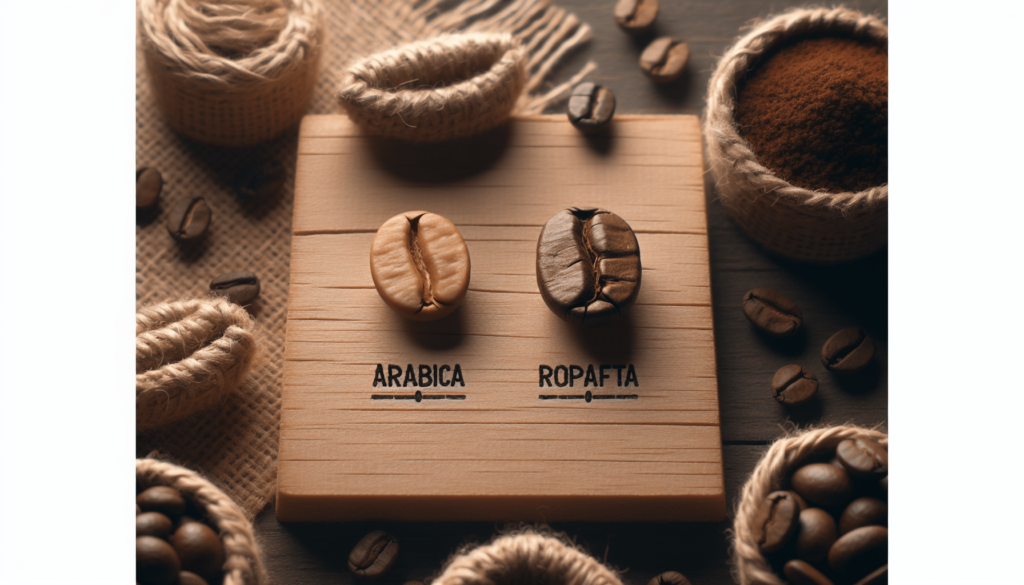How Can You Tell If Coffee Is Arabica Or Robusta?
Are you curious about the difference between Arabica and Robusta coffee beans? The world of coffee is rich and diverse, offering a range of flavors, aromas, and experiences. Understanding the differences between Arabica and Robusta can enhance your coffee-drinking experience and perhaps even make your morning ritual more satisfying.
What Are Arabica and Robusta Coffee Beans?
Coffee beans come in various types, but Arabica and Robusta are the two most commonly cultivated and consumed varieties. Each type has unique characteristics, influences on flavor, and specific growing conditions.
Arabica Coffee Beans
Arabica coffee beans, scientifically known as Coffea arabica, are the most popular type of coffee bean, making up about 60-70% of global coffee production. They are often considered superior due to their intricate flavor profile and lower bitterness. Typically grown at higher altitudes, Arabica beans thrive in specific climates.
Robusta Coffee Beans
Robusta coffee beans, also known as Coffea canephora, are typically easier to cultivate and more resistant to pests and diseases. They tend to be grown at lower altitudes and have a stronger, more bitter flavor compared to Arabica beans. Robusta beans are often used in coffee blends or instant coffee due to their robust flavor and higher caffeine content.
Key Differences Between Arabica and Robusta
To truly understand how to differentiate between Arabica and Robusta coffee, it’s important to explore their unique attributes.
Flavor Profile
One of the most noticeable differences lies in the flavor profiles of these two beans. Arabica beans generally offer a smoother, more complex flavor with notes of sugar, fruit, and berries. Robusta, on the other hand, tends to be stronger, with a harsher, more bitter taste and sometimes notes of nuts or chocolate.
| Feature | Arabica | Robusta |
|---|---|---|
| Flavor | Smooth, complex, fruity, sweet | Strong, bitter, nutty, chocolatey |
| Caffeine Content | Lower (approx. 1.2-1.5%) | Higher (approx. 2.2-2.7%) |
| Sugar Content | Higher | Lower |
Caffeine Content
Caffeine content is another differentiating factor. Robusta beans have nearly twice the caffeine content compared to Arabica beans. This higher caffeine content contributes to Robusta’s bitterness and makes it a preferred choice for espresso blends that require a punchier flavor.
Appearance and Shape
Visually distinguishing Arabica and Robusta beans can also help you identify them.
Arabica Beans
- Shape: Oval
- Size: Larger than Robusta
- Crease: S-shaped
Robusta Beans
- Shape: Round
- Size: Smaller than Arabica
- Crease: Straight line
Growing Conditions
The growing environment also significantly affects the characteristics of these beans.
- Arabica: Prefers higher altitudes (600-2000 meters above sea level), cooler climates, and subtropical regions.
- Robusta: Grows well at lower altitudes (0-600 meters), is more tolerant of warmer climates, and is generally more disease-resistant.
Price and Market Demand
The preference for Arabica beans in the specialty coffee market typically makes them more expensive.
- Arabica: Higher cost due to labor-intensive growth and better flavor profile.
- Robusta: More affordable, commonly used in blends and instant coffee due to its robust flavor and higher yield.

How to Taste and Identify Arabica vs. Robusta Coffee
You don’t need to be a professional coffee taster to identify the differences between Arabica and Robusta beans. By paying close attention to certain sensory experiences, you can begin to distinguish one from the other.
Aroma
Arabica beans generally offer a more aromatic and nuanced smell, often described as sweet, fruity, or floral. Robusta, in contrast, has a more straightforward, earthy, and bold scent.
Acidity
Acidity in coffee is often misunderstood. In this context, it refers to the bright, tangy notes that elevate the flavor. Arabica coffee is typically characterized by higher acidity levels, contributing to its pleasant, complex taste. Robusta has lower acidity, resulting in a denser, more straightforward flavor.
Body
The body of the coffee refers to the mouthfeel or the weight of the coffee on your palate. Robusta beans tend to produce a heavier, more full-bodied coffee, while Arabica generally has a lighter, more delicate body.
Aftertaste
Finally, consider the aftertaste. Arabica often leaves a sweeter, longer-lasting aftertaste, whereas Robusta can be more astringent and markedly bitter.
Practical Tips for Choosing Arabica or Robusta
Deciding between Arabica and Robusta depends on your personal preference and the occasion.
For Everyday Drinking
If you enjoy a smooth, enjoyable cup of coffee with a balanced and intricate flavor profile, Arabica is likely the better choice. Its lower caffeine content is also suitable for daily consumption without causing jitters.
For Strong, Bold Coffee
If you prefer a strong, intense cup of coffee that packs a punch, Robusta might be up your alley. It’s excellent for espresso drinks or if you need a quick caffeine boost.
For Specialty Drinks and Blends
Many coffee shops use a blend of Arabica and Robusta to achieve a balanced brew. Robusta adds body and a caffeine kick, while Arabica contributes complexity and nuance. Experimenting with blends can also be a fun way to discover your perfect cup.

Conclusion
Understanding the differences between Arabica and Robusta can deepen your appreciation of coffee. By learning to identify these beans through their flavor profiles, physical characteristics, and growing conditions, you can make more informed choices and perhaps even enhance your coffee-drinking experience. Whether you prefer the smooth and intricate flavors of Arabica or the strong and robust profile of Robusta, knowing what makes each type unique can help you savor every sip even more.
